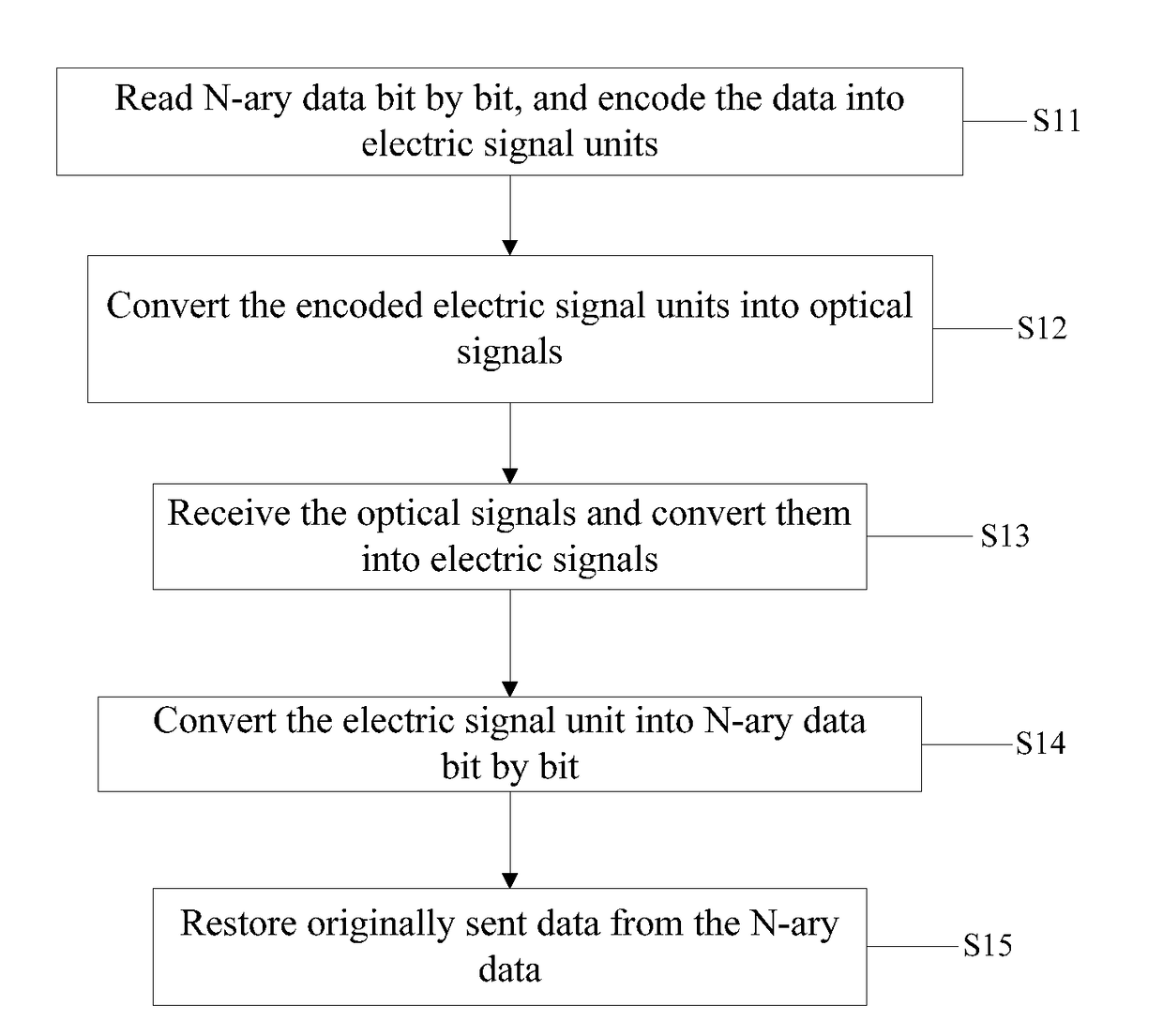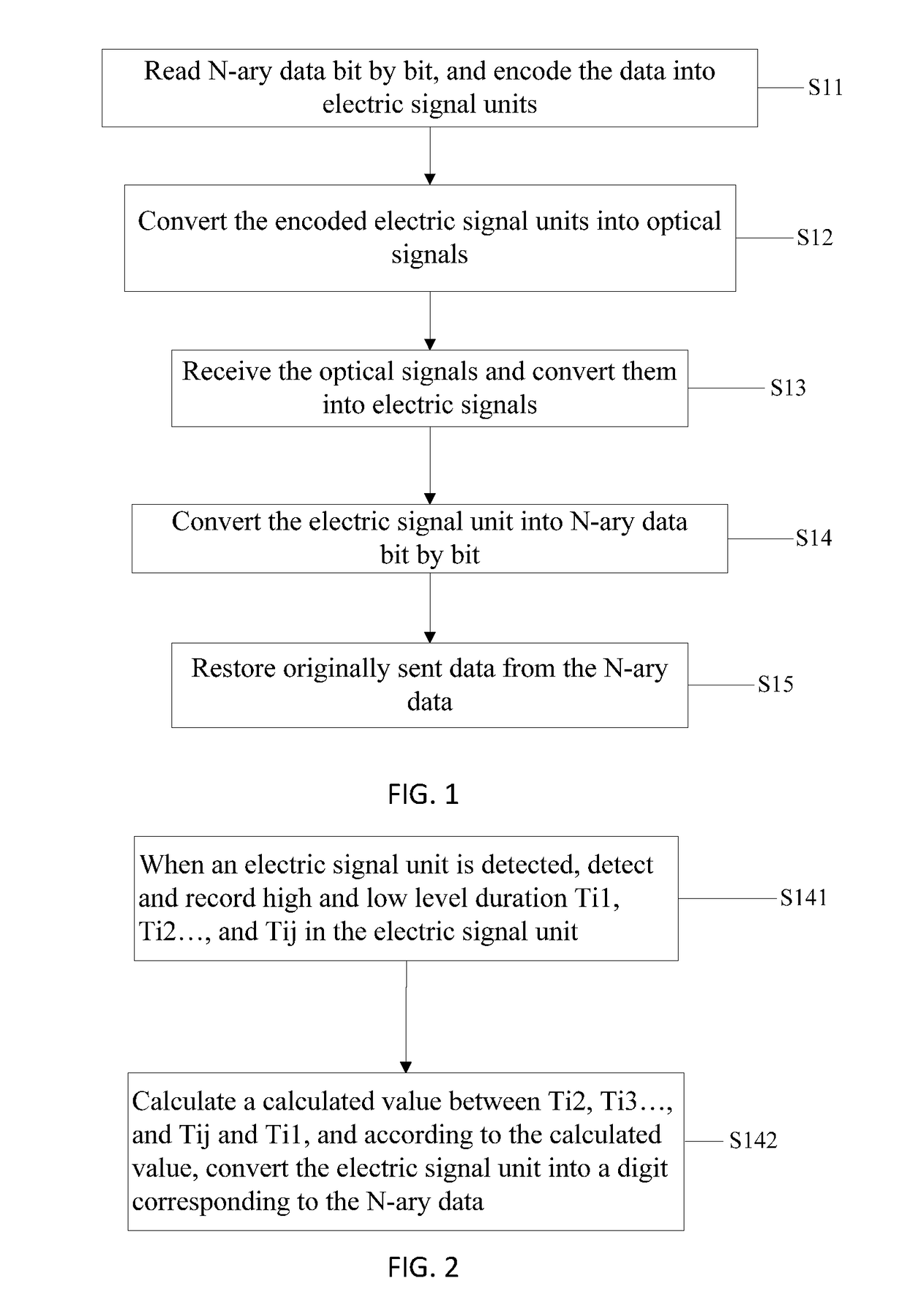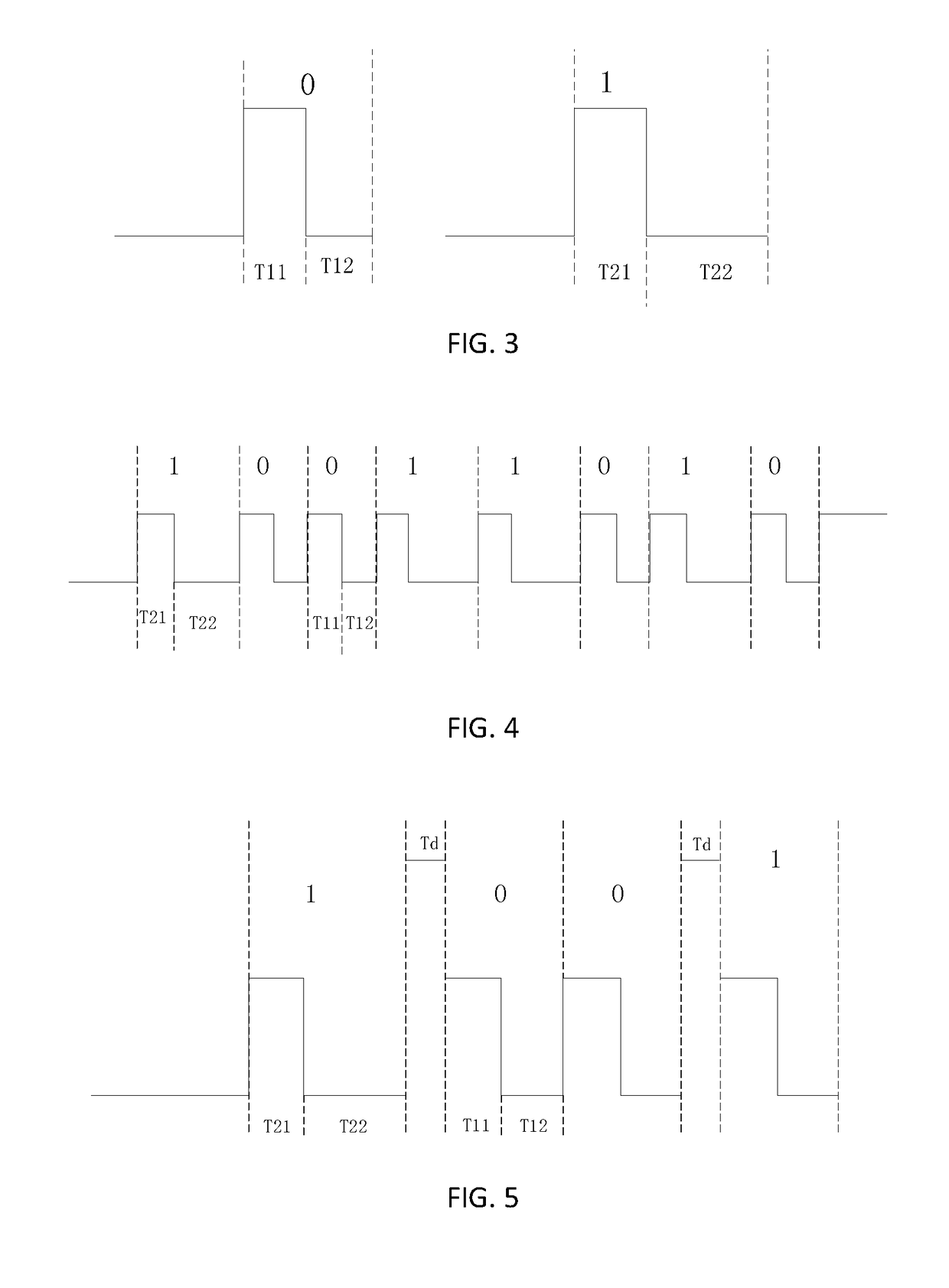Methods and devices for optical signal encoding and decoding
- Summary
- Abstract
- Description
- Claims
- Application Information
AI Technical Summary
Benefits of technology
Problems solved by technology
Method used
Image
Examples
embodiment 1
[0037]Although control precision of an LED flash of a mobile terminal such as a mobile phone is not high, a control delay of the flash is basically within a range. In addition, the mobile terminal such as a mobile phone itself can roughly read on and off duration of the LED flash. According to this characteristic, this embodiment proposes new encoding and decoding methods. Specifically, from a perspective of an optical signal, presence of light and absence of light are used to represent information instead of using change of states between light and absence of light to represent information. From a perspective of an electric signal, a level continuation state is used to represent information instead of using a level transition to represent information.
[0038]Therefore, in encoding, an encoding flowchart is shown in FIG. 1. In this embodiment, stroboscopic visible light emitted by a flash of a mobile phone and stroboscopic visible light emitted by a photonic client can be encoded, and...
embodiment 2
[0068]Based on the encoding method in Embodiment 1, this embodiment provides another calculation relationship of high and low level duration Ti1, Ti2 . . . , Tij in different electric signal units. Specifically, the calculation relationship is a difference operation between Ti2, Ti3 . . . , and Tij and Ti1. Specifically, binary data is used as an example. Binary data 0 is encoded into a first electric signal unit, and high level duration and low level duration in the first electric signal unit are T11 and T12 respectively. Binary data 1 is encoded into a second electric signal unit, and high level duration and low level duration in the second electric signal unit are T21 and T22 respectively. In this embodiment, a relationship between T12 and T11 and a relationship between T22 and T21 are: A difference between T12 and T11 is less than or equal to a third predetermined value (|T12−T11|T0), where the third predetermined value is preset decision duration T0. The setting of T0 needs to ...
embodiment 3
[0079]Based on Embodiment 1 and Embodiment 2, this embodiment further uses N=3 as an example to describe an encoding and decoding method provided in the present disclosure. A flowchart of the method is shown in FIG. 6, and the method includes the following detailed steps.
[0080]S31. Read ternary data bit by bit, and encode the data into electric signal units.
[0081]The ternary data is converted into corresponding electric signal units bit by bit. This step includes: encoding each different digit in the ternary data into a different electric signal unit, where different electric signal units are separated by delimiters. As regards the high level and the low level in the electric signal unit in this embodiment, a high level does not come before a low level by default. Instead, a low level may come before a high level. A delimiter between a high level and low level may be a level transition; or high or low level that continues for different duration is used as a characteristic level, and...
PUM
 Login to View More
Login to View More Abstract
Description
Claims
Application Information
 Login to View More
Login to View More - R&D
- Intellectual Property
- Life Sciences
- Materials
- Tech Scout
- Unparalleled Data Quality
- Higher Quality Content
- 60% Fewer Hallucinations
Browse by: Latest US Patents, China's latest patents, Technical Efficacy Thesaurus, Application Domain, Technology Topic, Popular Technical Reports.
© 2025 PatSnap. All rights reserved.Legal|Privacy policy|Modern Slavery Act Transparency Statement|Sitemap|About US| Contact US: help@patsnap.com



